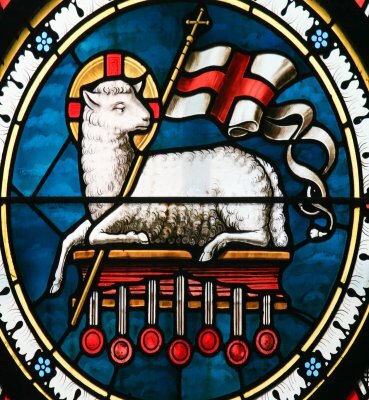Definition of Agnus Dei (Lamb of God)
Miscellanea / / July 04, 2021
By Javier Navarro, on Sep. 2016
 The words Agnus Dei mean "Lamb of God" and to understand them you have to contextualize them within the tradition of Christianity.
The words Agnus Dei mean "Lamb of God" and to understand them you have to contextualize them within the tradition of Christianity.
The lamb in Christian symbols, art and liturgy
In the artChristian of the early Christian period and medieval the lamb is more than just an animal, since it symbolically represents Jesus Christ. In this sense, one of the biblical references in which Jesus Christ is described as the "Lamb of God" appears in the episode of the baptism of Jesus Christ in the Jordan River, in which John the Baptist expressly says "behold the Lamb of God" (John 1, 25-37). Following this tradition Saint Paul refers to Jesus Christ as "our paschal lamb". In the liturgy it is also mentioned, specifically when it refers to the "Lamb who takes away the sins of the world" (John 1: 29-36).
Likewise, during the Middle Ages the picture of the risen Jesus Christ had the appearance of a lamb. It should not be forgotten, on the other hand, that in the sacred texts of Judaism a lamb is sacrificed during the Jewish Passover.
Although the lamb is one of the ways to represent Jesus Christ, at the same time it represents the concept of virtue, since it is a meek animal and this characteristic makes it serve as an ideal model of what the human being should be with respect to God, that is, someone humble who allows himself to be guided by the Creator. On the other hand, it must be taken into account that the Hebrews were mainly engaged in herding and, therefore, the lambs needed a shepherd; a circumstance that can be extrapolated to the relationship between humanity (the flock) and Jesus Christ (the good shepherd).
The animal world in the Bible and in medieval Christian tradition
In the Bible, animals are used to express ideas and there are many examples that illustrate the animal-idea binomial in the gospels (the example of the serpent symbolizing evil in the passage on earthly paradise is the most known). On the other hand, it should be noted that the Bible speaks of pure and impure animals, that is, those that can be eaten and those that cannot. Among the first, we can highlight the donkey, the lamb and some birds. Among the impure is the pig, the hare or the camel.
The prominence of animals in the Christian tradition was maintained in the Middle Ages, especially through medieval bestiaries, a genderliterary in which the animal world becomes an allegory to reflect on human values.
Photos: Fotolia - jorisvo
Themes in Agnus Dei (Lamb of God)